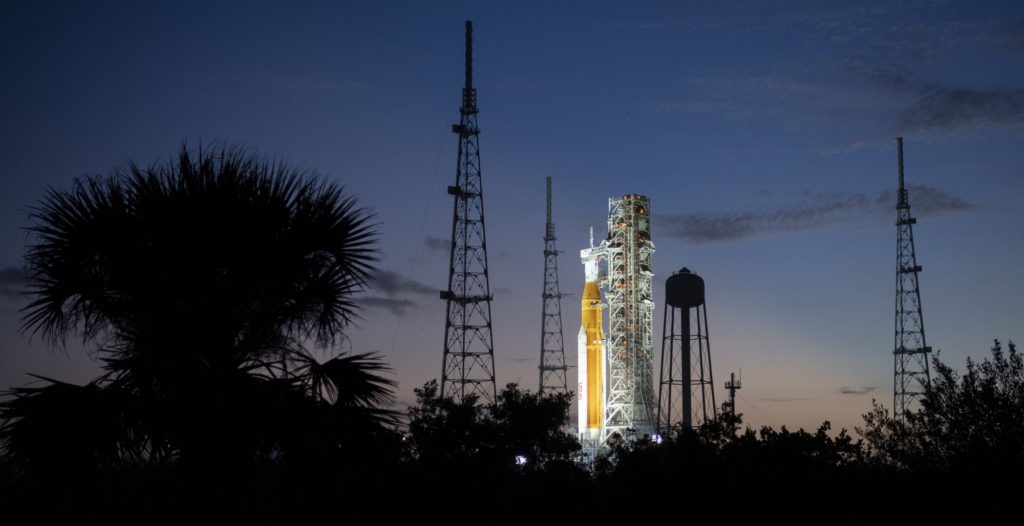As Tropical Storm Nicole barrels toward Florida’s East Coast, a $4 billion NASA rocket remains on a launchpad at Kennedy Space Center, where it will ride out the approaching storm.
(Bloomberg) — As Tropical Storm Nicole barrels toward Florida’s East Coast, a $4 billion NASA rocket remains on a launchpad at Kennedy Space Center, where it will ride out the approaching storm.
Nicole is intensifying and is expected to make landfall as early as Wednesday as a Category 1 hurricane with winds of 74 to 95 mph, potentially putting the huge Space Launch System rocket at risk. NASA estimates that the SLS can withstand wind gusts of up to 85 mph (74 knots), as well as sustained winds of 46 mph (40 knots).
The agency had hoped to launch the rocket and uncrewed Orion capsule to the moon as early as Nov. 14. It would be the first of the agency’s Artemis missions to return humans to the lunar surface. But NASA officials late Tuesday opted to delay the launch to Nov. 16 to allow employees time to return to work safely and perform inspections after the storm.
To prepare for Nicole, NASA has powered down Orion and the major pieces of the SLS rocket, according to a NASA blog post. Hard covers have been installed on the vehicle’s launch abort system on top of the rocket, while the crew access arm — the walkway that future astronauts will use to board the rocket — has been retracted and stored. “Teams also are securing nearby hardware and performing walkdowns for potential debris in the area,” NASA wrote.
The space center is at “HURCON III” status, a level of preparedness level for approaching hurricanes in which personnel work to secure the area’s facilities and hardware. NASA will also have a “ride-out” team on site throughout the storm to monitor conditions at the center.
Joel Cline, the tropical program coordinator with the National Weather Service, estimates there is an 80% to 90% chance of sustained tropical force winds along Florida’s space coast, with storm winds approaching the area as early as Wednesday morning. That’s roughly about the threshold that NASA said the rocket can handle.
“What they’re telling you is they’re looking for hurricane force wind gusts, and sustained winds of tropical storm force, which is the most likely probability,” Cline said.
In September, when Hurricane Ian was headed toward NASA’s Kennedy Space Center in Florida, the rocket was also out on the launchpad ahead of its planned mission. However, NASA ultimately decided to roll it back to its massive hangar, called the Vehicle Assembly Building, for shelter from the approaching storm.
NASA probably no longer has time for a rollback of the rocket since it takes roughly three days to prepare and move the vehicle the four miles to the Vehicle Assembly Building. In the meantime, the agency is standing by its decision to remain at the launchpad.
NASA said high winds present the greatest risk — but aren’t expected to exceed what the rocket is designed to withstand. “The rocket is designed to withstand heavy rains at the launch pad and the spacecraft hatches have been secured to prevent water intrusion,” the agency said.
Cline said that officials at Kennedy Space Center are on frequent calls with the National Hurricane Center, the Department of Defense and other entities operating in the area of the storm’s path.
Another concern, Cline said, is that the storm could bring as much as six inches of rain and a storm surge of three to five feet to Florida’s coast.
Kennedy Space Center is located east of Orlando on Florida’s Atlantic coast.
(Adds wind force of Category 1 hurricanes in second paragraph.)
More stories like this are available on bloomberg.com
©2022 Bloomberg L.P.











